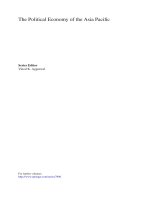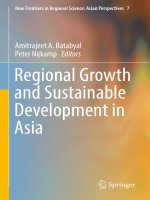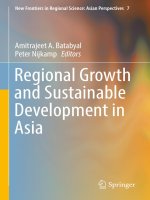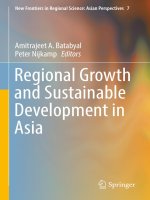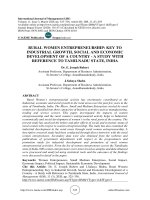Economic growth and economic development 672
Bạn đang xem bản rút gọn của tài liệu. Xem và tải ngay bản đầy đủ của tài liệu tại đây (60.44 KB, 1 trang )
Introduction to Modern Economic Growth
appear to have been unskill-biased (skill-replacing). The artisan shop was
replaced by the factory and later by interchangeable parts and the assembly line. Products previously manufactured by skilled artisans started to
be produced in factories by workers with relatively few skills, and many
previously complex tasks were simplified, reducing the demand for skilled
workers. Mokyr (1990, p. 137) summarizes this process as follows:
“First in firearms, then in clocks, pumps, locks, mechanical reapers,
typewriters, sewing machines, and eventually in engines and bicycles, interchangeable parts technology proved superior and replaced the skilled
artisans working with chisel and file.”
So why was technological change, that has been generally skill biased
over the 20th century, biased towards unskilled workers in the 19th century?
(3) Beginning in the late 1960s and the early 1970s, both unemployment and
the share of labor in national income increased rapidly in a number of continental European countries. During the 1980s, unemployment continued
to increase, but the labor share started a steep decline, and in many countries, ended up below its initial level. Blanchard (1997) interprets the first
phase as the response of these economies to a wage-push by workers, and
the second phase as a possible consequence of capital-biased technological
changes.
Is there a connection between capital-biased technological changes in
European economies and the wage push preceding it?
(4) As we have seen in Chapters 2 and 8, balanced economic growth is only
possible when technological change is asymptotically Harrod-neutral, i.e.,
purely labor augmenting. If technological change is not labor augmenting,
we should not expect equilibrium growth to be balanced. But a range of evidence suggests that modern economic growth has been relatively balanced.
Is there any reason to expect technological change to be endogenously labor
augmenting?
(5) The past several decades have experienced a large increase in the volume
of international trade and a rapid process of globalization. Do we expect
658



